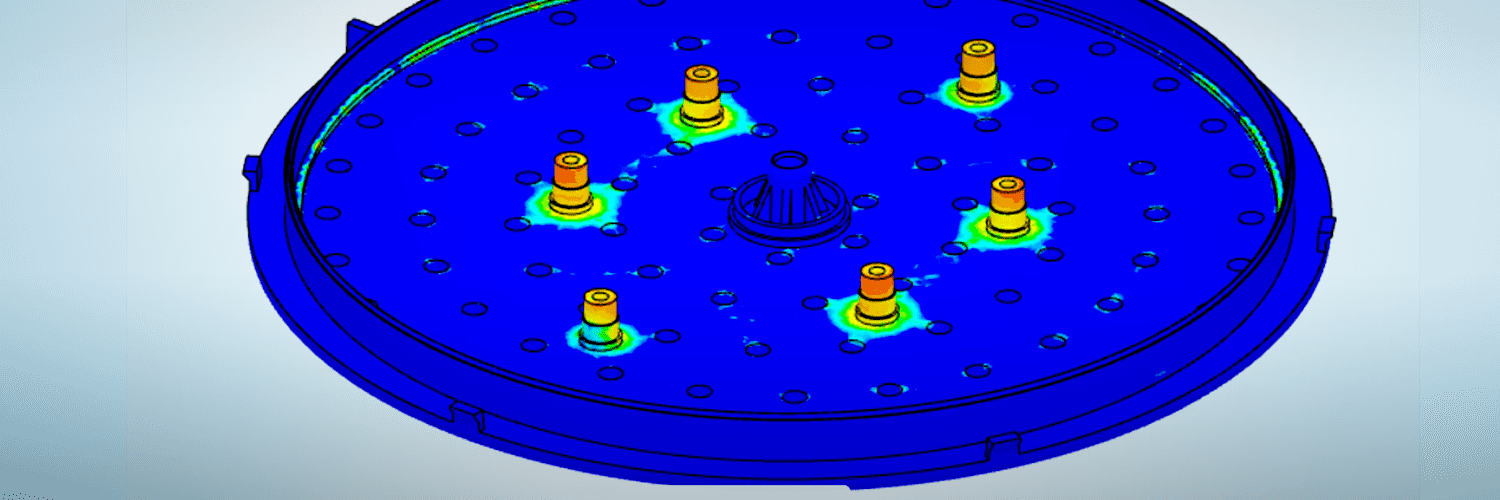
Brainchild Engineering is a physical product development company based in Northville, Michigan. They are a team of 45 engineers, designers, marketers, researchers, and project leaders who have been helping product companies build, launch, and sell amazing new products since 2016. They were named one of the Top 10 Emerging Prototype Engineering Companies of 2021 by Manufacturing Outlook Magazine. Brainchild covers the entire spectrum of a new product’s development and launch process. They have extensive experience in a broad range of industries, including: Consumer Products, Medical Devices, Industrial Machinery, Scientific Equipment, and Inventions.
Brainchild works with very tight schedules and fixed-cost contracts, as such, they need to get the engineering solution right the first time, and there is little room for errors and delays. Dan Engerer (Founder and Director) recognizes the benefits of using engineering simulation for virtual prototyping to reduce/minimize physical testing and allow for rapid and effective exploration of the design space (such as through parametric sweeps). Simulation enables his team to be creative and find the balance rapidly without a lot of trial and error, and to turn around innovative product development fast.
Brainchild were early adopters and has now standardized on Onshape® for their CAD and SimScale for their CAE simulation requirements. They selected cloud-based SaaS tools for convenience as such tools are not limited by on-premises hardware performance and cost, and allow Brainchild to avoid the headache of the IT management aspect of on-premises hardware which they view as a dinosaur approach. Also, the global accessibility and collaboration features of the SimScale cloud-based CAE tools mean that Brainchild can hire skilled engineers based anywhere using the simulation tool, performing design optimizations whilst following design for manufacturing (DFM) considerations. In summary, cloud-native CAD and CAE allow their engineering team to work remotely very effectively, as they have deployed a hybrid approach of local versus global engineering talent.
Cloud-based CAE allows Brainchild Engineering to hire engineers with impressive pedigrees and expertise located anywhere globally who can then work remotely very effectively.

Dan Engerer
Director, Brainchild Engineering
In this case study, Brainchild Engineering used both fluid flow (CFD) and structural (FEA) analysis types in SimScale to help develop a high-performance showerhead for the consumer product company SparkPod, which sells primarily via Amazon. Brainchild leveraged the fact that SimScale provides access to multiple physics (fluid flow, structural, and heat transfer) within the same platform, with the same initiative UI, so there is no need for the engineers to learn how to use multiple different simulation tools (or workflows) for each physics.
Brainchild also reports an excellent experience with the SimScale in-product support feature – this is another SimScale platform benefit making simulation easier and more accessible: A user can ask questions in real-time to the SimScale support team using a chat box, and can even share their simulation project to help the team provide guidance and diagnose problems.
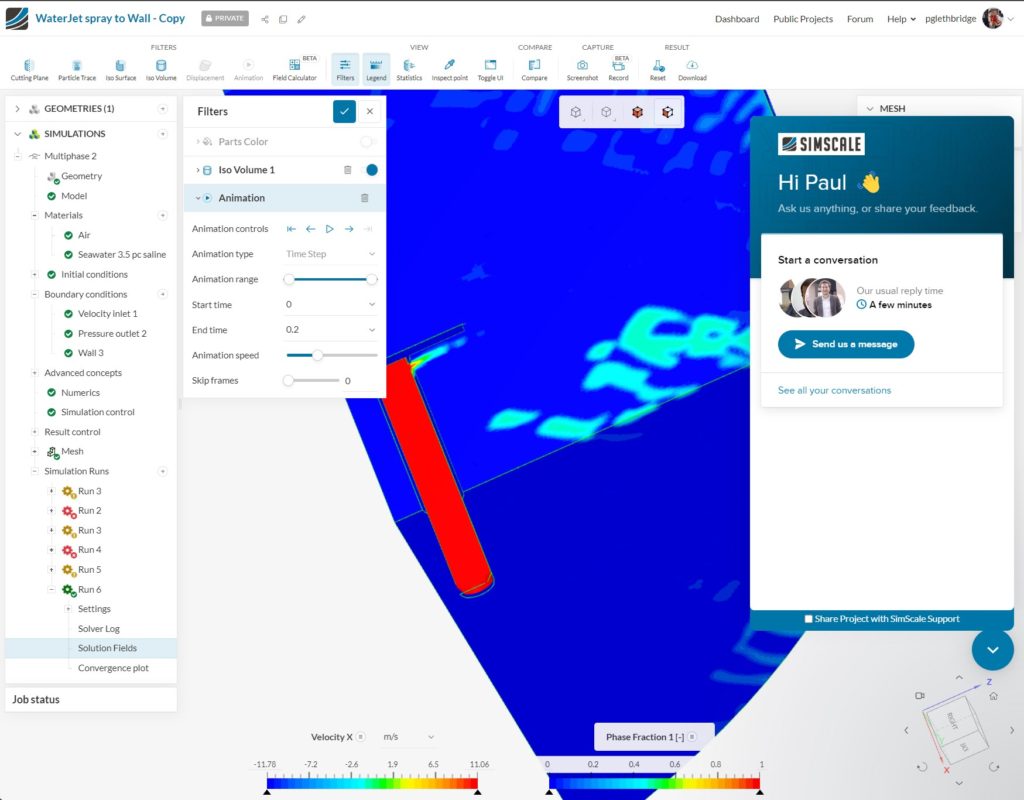
The engineering challenge was to develop a larger showerhead that provided a premium shower experience at a very competitive price point. They needed to replicate the performance of SparkPod’s 6-inch showerhead scaled up to an 8-inch diameter providing the same flow rate and the same feel/distribution of the water. Plus they also needed to develop new square-shaped showerheads in both 6-inch and 8-inch sizes. Khalid Mostafa (part of the engineering team, working in Egypt) cautioned that there are many poor quality, large diameter showerheads sold on Amazon that explode when subjected to standard water supply pressure, so the designs often incorporate pressure reduction features that result in a disappointing performance.


The main body of the showerhead is injection molded plastic that is ultrasonically welded and chrome plated. In scaling up the showerhead Brainchild needed to ensure the ultrasonic weld poles were optimized so that the two halves of the main body could withstand the increased forces due to the larger surface area (water pressure) with an appropriate safety margin – i.e. For the same water pressure (80 psi), the force is almost doubled when going from a 6- to 8-inch diameter head.
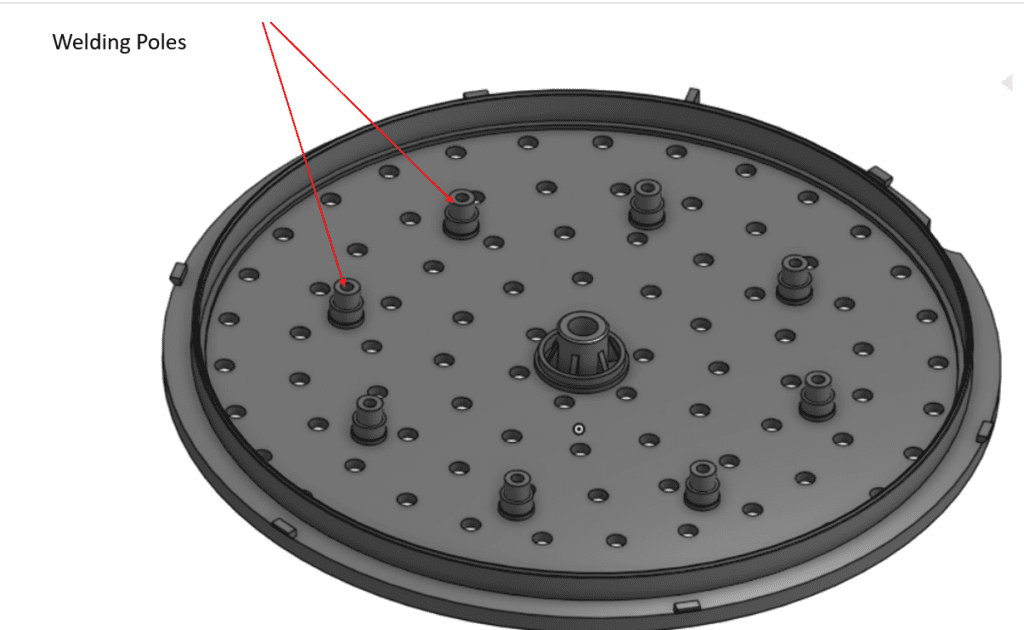
Brainchild used the SimScale Incompressible Fluid Flow analysis type to understand the water flow rate and pressure/force loading inside the showerhead and to calculate the water pressure that acts on the shower walls.
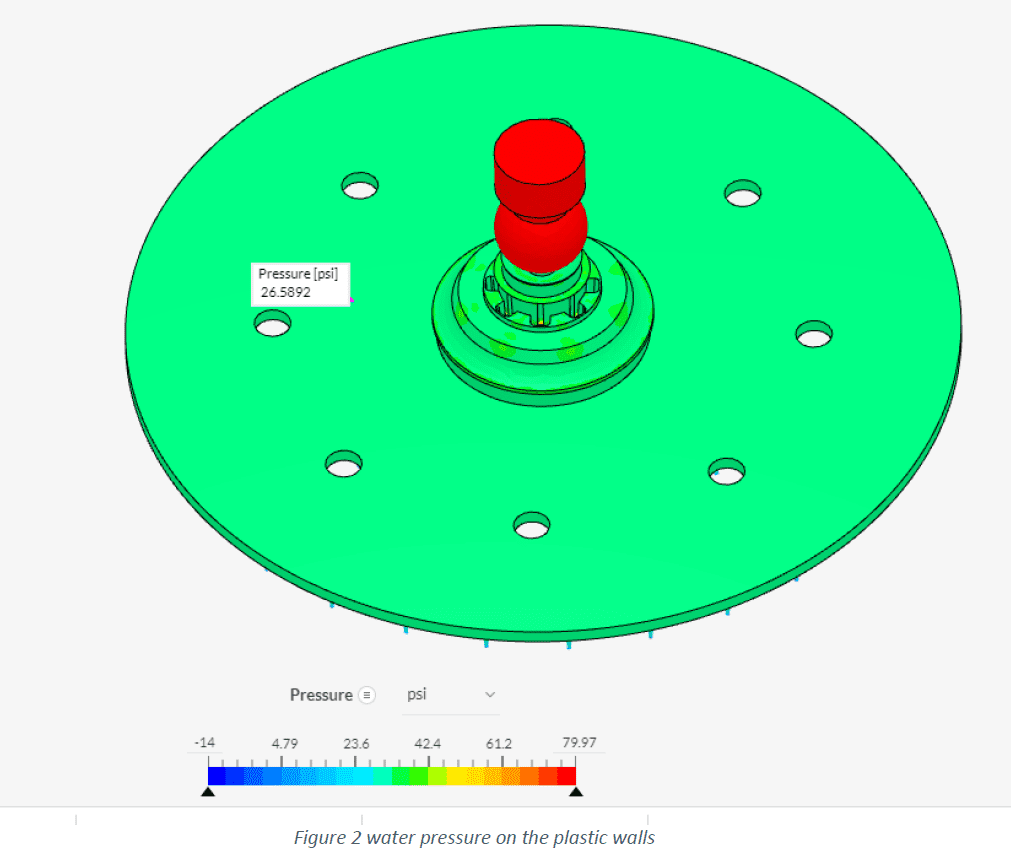
Brainchild then used the SimScale structural (FEA) analysis type with linear material properties to look at the mechanical stress and deformation resulting from the force load to design the best weld poles. Here a trade-off is required, large weld beads will be stronger than smaller ones, but will reduce the pressure and flow: Simulation design iterations and design optimization allowed them to virtually test multiple designs (about 20 iterations for each model) and were able to quickly identify the optimal weld post size, post profile, and cavity design yielding a good factor of safety. Brainchild then shared the design with SparkPod who tested and verified the results.

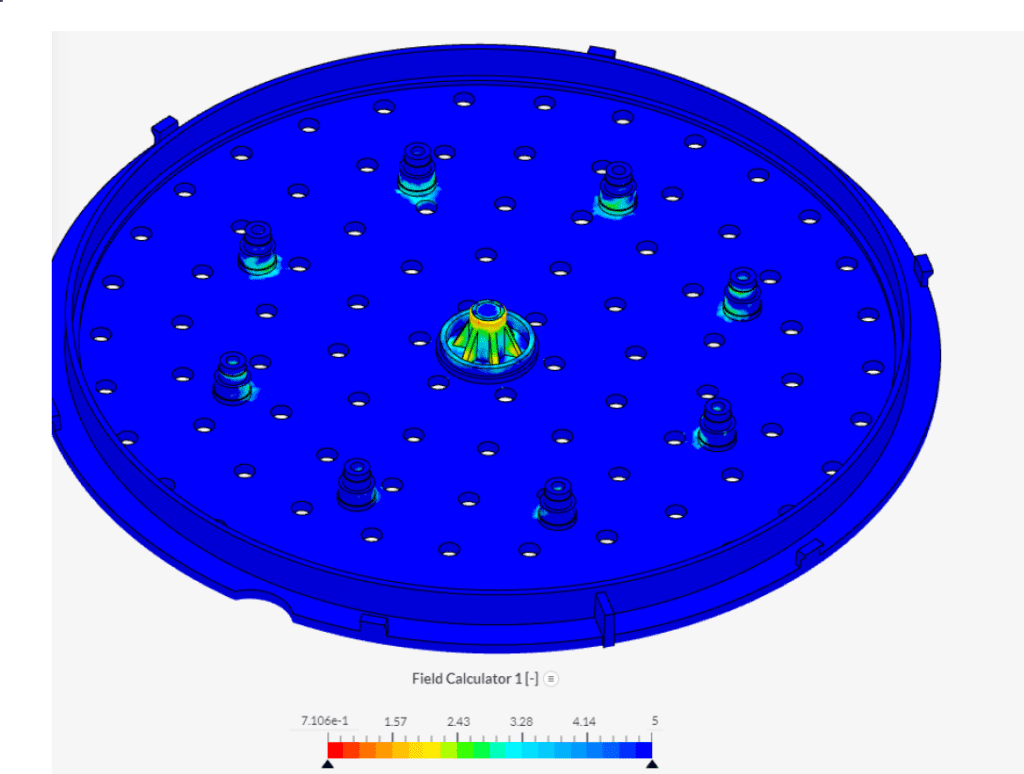
The team also used SimScale CFD to ensure that the nozzles of the large showerhead have a uniform flow distribution even with low-pressure operation at 30 psi.
Through the use of virtual prototyping, Brainchild Engineering was able to rapidly develop a larger (8-inch) showerhead for SparkPod that has superior performance to its competitors, with no loss of pressure or flow rate. They also followed the same procedure to develop two square design showerheads in a very short time. Performance summary:
By considering multiple physics —i.e. by examining both fluid flow and structural performance of the product Brainchild was able to optimize the design saving the time and cost of trial and error for modifications on the production mold and tooling, whilst keeping within the manufacturing envelope prescribed by SparkPod.
The compressed development time and resulting product performance delivered an excellent ROI for both Brainchild and their customer, SparkPod.
The value in using simulation is there. Our customer SparkPod saw a very good ROI.

Dan Engerer
Director, Brainchild Engineering
Brainchild clearly understands the benefits of early-stage use of simulation and design optimization and is able to provide valuable ROI for their customers. As stated earlier, Brainchild has already standardized Onshape and SimScale for their CAD and CAE tools. Moving forward, Brainchild will continue to use SimScale to drive innovation and product development speed. They plan to make more use of time transient simulations, especially now that SimScale has made available more efficient meshing methods and is constantly enhancing solver speeds. This will allow them to understand how the deformation, stress, or fluid flow varies with time, giving them further insight into transient load conditions that can paint a very different picture from static conditions. Brainchild also plans to use the recently released SimScale – Onshape CAD Associativity capability to further streamline their CAD and CAE workflow. This provides a direct connection between the tools making CAD import seamless, no need to save STEP files and then import. Instead, users can select different versions of their CAD model from within SimScale and instantly start simulating. Check out our blog on CAD Associativity for more details.
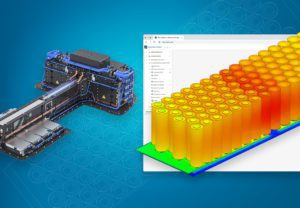
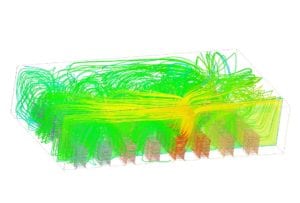
Sign up for SimScale
and start simulating now